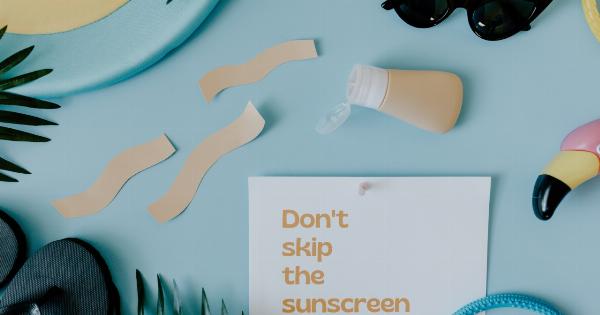As parents, we always want to protect our children from harm. One essential way to do that is by ensuring they are adequately protected from the sun’s harmful rays. Sunscreen is a crucial tool in shielding their delicate skin from potential damage.
This guide will provide parents with valuable information on the importance of sunscreen, how to choose the right one, and tips for proper application.
Understanding the Risks
Exposure to the sun without protection can have severe consequences for our children’s health. Sunburns, which are a common result of unprotected skin, not only cause discomfort but also increase the risk of developing skin cancer later in life.
Additionally, sunburns can contribute to the premature aging of the skin. Therefore, it is vital to make sunscreen an integral part of our children’s daily routine to minimize these risks.
Choosing the Right Sunscreen
With numerous sunscreen options available in the market, choosing the right one can be overwhelming. To make an informed decision, look for these essential factors:.
1. Sun Protection Factor (SPF)
The SPF indicates the level of protection a sunscreen provides against UVB rays, which are responsible for sunburns. It is recommended to choose a sunscreen with an SPF of at least 30.
This level of protection blocks around 97% of the sun’s harmful rays.
2. Broad-Spectrum Protection
Ensure the sunscreen provides broad-spectrum protection, which shields the skin against both UVA and UVB rays. UVA rays can also contribute to skin aging and damage, so comprehensive protection is essential.
3. Water Resistance
If your child will be swimming or participating in water activities, opt for a water-resistant sunscreen that can endure prolonged exposure to water. However, keep in mind that even water-resistant sunscreens should be reapplied every two hours.
4. Choose the Right Formulation
Sunscreens are available in various formulations, including lotions, creams, gels, sticks, and sprays. Consider your child’s preferences and skin type when selecting the formulation. For sensitive skin, gentle and hypoallergenic options are ideal.
Tips for Proper Sunscreen Application
While selecting the right sunscreen is essential, proper application is equally crucial for effective protection. Follow these tips to ensure your child is fully safeguarded against harmful sun rays:.
1. Apply Generously
Don’t be stingy when it comes to applying sunscreen. Use a sufficient amount to cover all exposed areas of your child’s skin thoroughly. Experts recommend using one ounce (approximately a shot glass full) of sunscreen for adequate coverage.
2. Apply in Advance
Remember to apply sunscreen at least 15-30 minutes before heading outdoors. This time allows the sunscreen to fully absorb into the skin and provide optimal protection.
3. Reapply Frequently
For consistent protection, reapply sunscreen every two hours and immediately after swimming, sweating excessively, or towel-drying. Even water-resistant sunscreens can lose effectiveness over time, so be vigilant about reapplication.
4. Protect Vulnerable Areas
Pay extra attention to areas that often go unnoticed, such as the ears, neck, lips, and the backs of the hands and feet. These areas are highly susceptible to sunburns and long-term damage.
5. Encourage Sun-Protective Measures
While sunscreen is crucial, it should not be the sole form of protection. Encourage your child to wear hats, sunglasses, and protective clothing when spending extended periods in the sun.
Seeking shade during peak sun hours (10 am to 4 pm) is also advisable.
Sunscreen for Infants
Infants have highly sensitive skin that requires specific care. Here are some additional guidelines for using sunscreen on infants:.
1. Consult a Pediatrician
Before using sunscreen on infants under six months old, it’s essential to consult a pediatrician. In some cases, it may be more appropriate to rely on protective clothing, shade, and limited sun exposure for infants.
2. Choose a Gentle Formula
Select a sunscreen specifically formulated for infants that is free from fragrances, dyes, and other potential irritants. Look for a physical sunblock containing zinc oxide or titanium dioxide, as they are less likely to cause adverse reactions.
Conclusion
Protecting our children from the sun’s harmful rays should be a top priority for parents.
By selecting the right sunscreen, applying it correctly, and implementing other sun-protective measures, we can significantly reduce the risk of sunburns, skin damage, and even skin cancer. Make sure to educate your children about the importance of sun protection from an early age, establishing healthy habits that will last a lifetime.





























